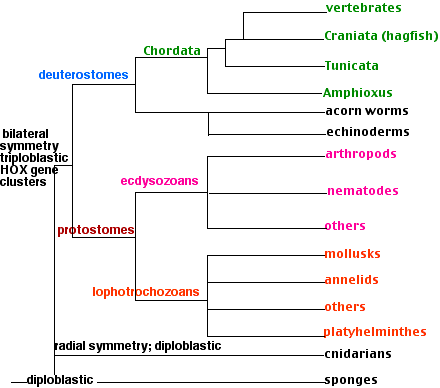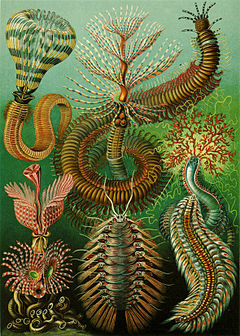Topic definition of invertebrate in biology: Delve into the intriguing world of invertebrates, where spineless wonders reign supreme, constituting a vast majority of Earth"s animal species. Discover their unique biology and ecological significance in this comprehensive exploration.
Table of Content
What is the definition of invertebrate in biology?
In biology, an invertebrate is defined as any animal that lacks a vertebral column, also known as a backbone. Unlike vertebrates, which include animals with cartilaginous or bony structures, invertebrates do not possess a spine.
There are various types of invertebrates, each with their unique characteristics. Some examples of invertebrates include jellyfish and worms, which have fluid-filled hydrostatic skeletons. Others, like insects and crustaceans, have hard exoskeletons or outer shells.
Invertebrates play a vital role in ecosystems by ensuring biological control. This involves the natural control of pests without the use of chemicals. Invertebrates help maintain balance within an ecosystem, contributing to its overall health and stability.
READ MORE:
Overview of Invertebrates
Invertebrates, encompassing a vast array of species, are fascinating creatures that form the majority of Earth"s biodiversity. These organisms are defined primarily by the absence of a vertebral column, distinguishing them from vertebrates. This diverse group includes everything from microscopic organisms to larger species, playing crucial roles in various ecosystems.
- Definition: Invertebrates are animals that lack a backbone. They do not have a vertebral column, which is characteristic of vertebrates.
- Diversity: This group is incredibly diverse, including species like mollusks, arthropods, annelids, cnidarians, and many others.
- Evolutionary Significance: Invertebrates have evolved over millions of years, adapting to almost every environment on Earth.
- Ecological Roles: They play vital roles in ecosystems, such as pollination, soil aeration, and as part of food webs.
- Scientific Study: Studying invertebrates provides insights into evolutionary biology, ecology, and can even have medical implications.
Understanding invertebrates is not just about recognizing their lack of a spine, but also appreciating their complexity and the vital roles they play in maintaining ecological balance.

Defining Characteristics
Invertebrates are a diverse group of animals characterized primarily by the absence of a vertebral column. This definition encompasses a vast array of species, each with unique features, but there are some common characteristics that many invertebrates share.
- Lack of Backbone: The most defining trait of invertebrates is their lack of a spine or vertebral column, a feature distinguishing them from vertebrates.
- Diversity in Size and Form: Invertebrates vary greatly in size, ranging from microscopic rotifers to the colossal squid, reaching lengths of up to 9-10 meters.
- Body Segmentation: Many invertebrates, such as annelids (earthworms) and arthropods (insects, spiders), exhibit body segmentation, providing flexibility and a wider range of motion.
- Evolution of Limbs: Limb evolution has occurred in various invertebrate groups, notably in arthropods, enhancing their ability to adapt to different environments.
- Exoskeletons: Arthropods, for instance, have a hard external exoskeleton that offers protection and support.
- Diverse Reproductive Strategies: Invertebrates employ various reproductive methods, with most reproducing sexually, while some can reproduce asexually.
- Adaptability: Invertebrates can be found in almost every environment on Earth, from deep oceans to high in the atmosphere.
These characteristics underscore the adaptability and evolutionary success of invertebrates, making them an integral part of the Earth"s biodiversity.
Historical Background
The concept of invertebrates dates back to early scientific explorations into the diversity of animal life. The term "invertebrate" itself was first used in the early 19th century, originating from Latin roots.
- Etymology: The word "invertebrate" comes from the Latin "in-" meaning "not" and "vertebrata", referring to animals with a vertebral column. This term effectively classifies a vast group of animals by the absence of this particular feature.
- Early Recognition: The categorization of animals into vertebrates and invertebrates has been a fundamental approach in zoology, helping in the understanding of animal evolution and classification.
- Evolutionary Significance: The study of invertebrates has been crucial in understanding the evolution of life forms on Earth. Invertebrates, being the most diverse and numerous group of animals, offer insights into the adaptability and resilience of life.
- Development of Taxonomy: The classification of invertebrates has evolved over time with advances in scientific knowledge, encompassing a variety of species from simple sponges to complex cephalopods.
- Contribution to Biology: Invertebrates have played a significant role in the development of various biological theories and concepts, contributing to our understanding of genetics, physiology, and ecology.
This historical exploration into the world of invertebrates reveals the rich tapestry of life that exists without a backbone, underscoring the vast diversity of the animal kingdom.

Classification and Taxonomy
The classification and taxonomy of invertebrates are complex, due to their immense diversity and evolutionary history. This classification categorizes an enormous variety of species under a common umbrella, based on certain key characteristics.
- Major Phyla: Key phyla of invertebrates include Arthropods (like insects, spiders, and crustaceans), Mollusks (such as snails and octopi), Annelids (including earthworms and leeches), Echinoderms (like starfish and sea urchins), Flatworms, Cnidarians (such as jellyfish and corals), and Sponges.
- Diversity and Adaptation: Invertebrates exhibit a wide range of adaptations to various environments, from the depths of oceans to the driest deserts.
- Taxonomic Challenges: The term "invertebrate" is an umbrella term for all animals excluding vertebrates. This makes it a paraphyletic group, meaning it includes all descendants of a common ancestor except for one branch (the vertebrates).
- Evolutionary Aspects: The evolutionary history of invertebrates is complex, with some groups like Tunicata and Cephalochordata being more closely related to vertebrates than to other invertebrates.
- Segmentation and Limbs: Key evolutionary features in invertebrates include the development of body segmentation and limbs, which have evolved multiple times across different lineages.
The classification and taxonomy of invertebrates continue to evolve with ongoing scientific research, enhancing our understanding of these diverse and vital organisms.
Major Groups of Invertebrates
Invertebrates, constituting a significant portion of the animal kingdom, are categorized into various groups based on their unique characteristics. Each group represents a distinct evolutionary path and ecological role.
- Arthropoda: This is the largest phylum of invertebrates, encompassing insects, spiders, crustaceans, and others. Arthropods are characterized by their hard exoskeleton and jointed limbs.
- Mollusca: Including snails, octopi, and clams, mollusks are known for their muscular foot and, in many species, a shell.
- Annelida: This group includes segmented worms like earthworms and leeches, known for their segmented bodies and roles in soil aeration and nutrient cycling.
- Echinodermata: Starfish and sea cucumbers fall under this category, known for their spiny skin and radial symmetry.
- Cnidaria: Including jellyfish, corals, and sea anemones, cnidarians are recognized for their stinging cells and radial body plans.
- Porifera: Sponges, simple invertebrates without true tissues or organs, filter feeders often found in marine environments.
- Platyhelminthes: Also known as flatworms, these invertebrates lack complex circulatory and respiratory systems and include both free-living and parasitic species.
- Nematoda: Roundworms, often microscopic, play various roles in ecosystems, with many being parasitic.
- Protozoans: Single-celled organisms like amoebas, exhibiting diverse forms and lifestyles.
These groups highlight the immense diversity within the invertebrate category, showcasing the wide range of adaptations and ecological niches occupied by these spineless wonders of the animal kingdom.
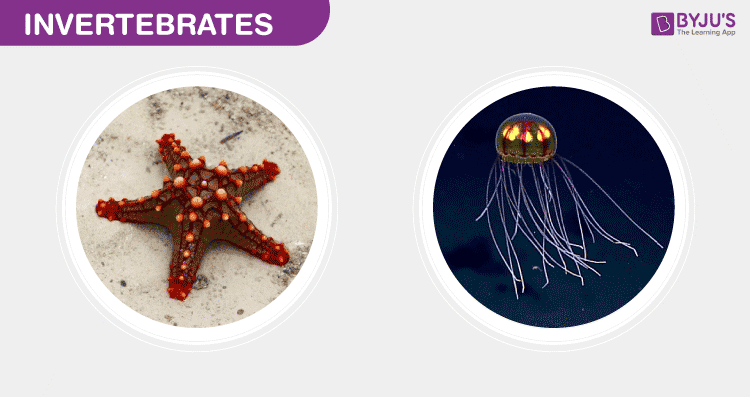
Adaptations and Evolution
Invertebrates, which include a vast majority of animal species, display a remarkable array of adaptations and evolutionary developments. These adaptations have allowed them to thrive in virtually every environment on Earth.
- Body Segmentation: Many invertebrates, such as annelids (earthworms) and arthropods (insects, spiders, crabs), have evolved segmented bodies. This segmentation enhances flexibility and motion.
- Limbs: The evolution of limbs has been a significant development in some invertebrate groups, particularly arthropods. This adaptation has enabled these creatures to move onto land and diversify extensively.
- Wings: Insects (a subgroup of arthropods) have developed wings, allowing them to conquer new ecological niches by flying, an adaptation evolved multiple times in animal evolution.
- Diverse Reproductive Strategies: Invertebrates employ a variety of reproductive methods, including asexual reproduction in some groups, allowing for rapid population growth and colonization of new habitats.
- Exoskeletons: Many arthropods, such as insects and crustaceans, possess hard external exoskeletons, offering protection and structural support.
- Specialized Sensory Organs: Invertebrates have developed a range of sensory organs adapted to their specific environments, from light-sensitive cells in jellyfish to the complex eyes of arthropods.
These adaptations illustrate the evolutionary success of invertebrates and their ability to occupy diverse ecological roles across the planet.
Introduction to Invertebrates
Invertebrates: Discover the extraordinary world of invertebrates as you dive into the depths of the ocean and explore their captivating and diverse nature. This breathtaking video showcases the stunning beauty and incredible adaptations of these spineless creatures that will leave you in awe.
Invertebrates Biology for Teens
Biology: Unleash your curiosity in the fascinating realm of biology through this captivating video. From uncovering the secrets of DNA to unraveling the complexities of the human body, embark on a thrilling scientific journey that will deepen your understanding of life itself. Get ready to be amazed by the wonders of the natural world!
Role in Ecosystems
Invertebrates play crucial roles in various ecosystems, contributing significantly to biodiversity and the functioning of ecosystems. Their activities influence many ecological processes and services.
- Soil Aeration and Fertility: Earthworms, for example, are vital for soil health. They aerate the soil, enhance its nutrient content, and aid in decomposing organic matter.
- Pollination: Many invertebrates, especially insects like bees and butterflies, are essential pollinators for a wide range of plants, including those critical for agriculture.
- Food Web Contributions: Invertebrates serve as a food source for numerous vertebrates, playing a key role in various food webs. They are essential in the diet of birds, fish, and mammals.
- Recycling Nutrients: Many invertebrates, particularly those in marine environments like certain mollusks and crustaceans, are involved in nutrient cycling, breaking down and recycling nutrients.
- Marine Ecosystems: Invertebrates like corals and jellyfish significantly contribute to marine ecosystems" health and biodiversity. Coral reefs, for instance, are vital habitats for a multitude of marine species.
- Disease Control: Some invertebrates help control diseases by preying on vectors like mosquitoes.
- Environmental Indicators: The presence or absence of certain invertebrate species can indicate the health of an ecosystem, making them valuable for ecological monitoring.
In summary, invertebrates are integral to the balance and sustainability of ecosystems worldwide, underpinning many ecological processes and services.

READ MORE:
Human Interaction and Impact
Humans interact with invertebrates in a multitude of ways, impacting both the invertebrate populations and the broader ecosystems they inhabit. These interactions range from beneficial to detrimental, affecting biodiversity and ecological balance.
- Environmental Indicators: Invertebrates, due to their sensitivity to environmental changes, often serve as indicators of ecosystem health. Their presence or absence can signal changes in environmental conditions.
- Agriculture and Pest Control: Insects, a major invertebrate group, play dual roles in agriculture. While some are essential for pollination, others are pests that can damage crops. Pest control measures often target these invertebrates.
- Biological Research: Invertebrates like fruit flies (Drosophila) are crucial in genetic and medical research due to their simpler biological structures and rapid life cycles.
- Medicinal Use: Some invertebrates are sources of medicinal compounds. For example, certain marine invertebrates provide compounds used in medical research and drug development.
- Ecological Impact: Human activities like pollution, habitat destruction, and climate change have profound impacts on invertebrate populations, affecting biodiversity and ecosystem services.
- Conservation Efforts: Efforts to conserve invertebrate species, such as coral reefs and pollinator insects, are crucial for maintaining ecological balance and biodiversity.
- Education and Awareness: Understanding the role of invertebrates promotes better conservation practices and awareness of human impact on these vital species.
The relationship between humans and invertebrates is complex and significant, highlighting the need for sustainable practices to preserve these essential components of our ecosystems.
Exploring the world of invertebrates unveils a realm where spineless creatures reign, showcasing nature"s incredible adaptability and diversity. Their study not only enriches our understanding of biology but also underscores the profound impact these organisms have on our ecosystems and lives.



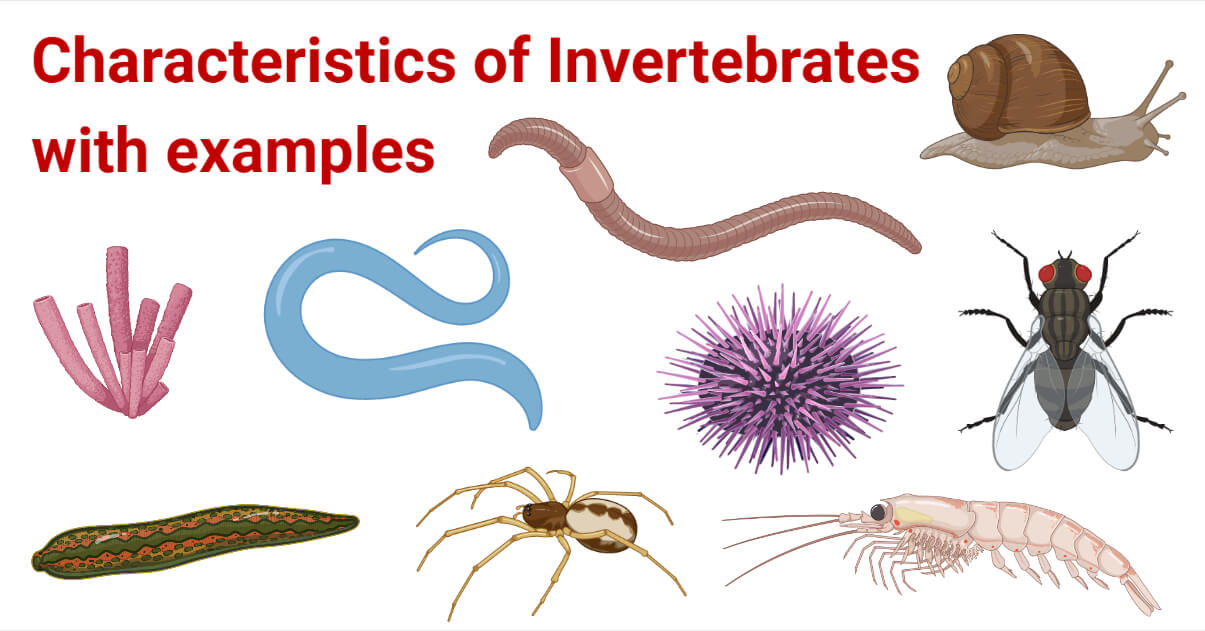
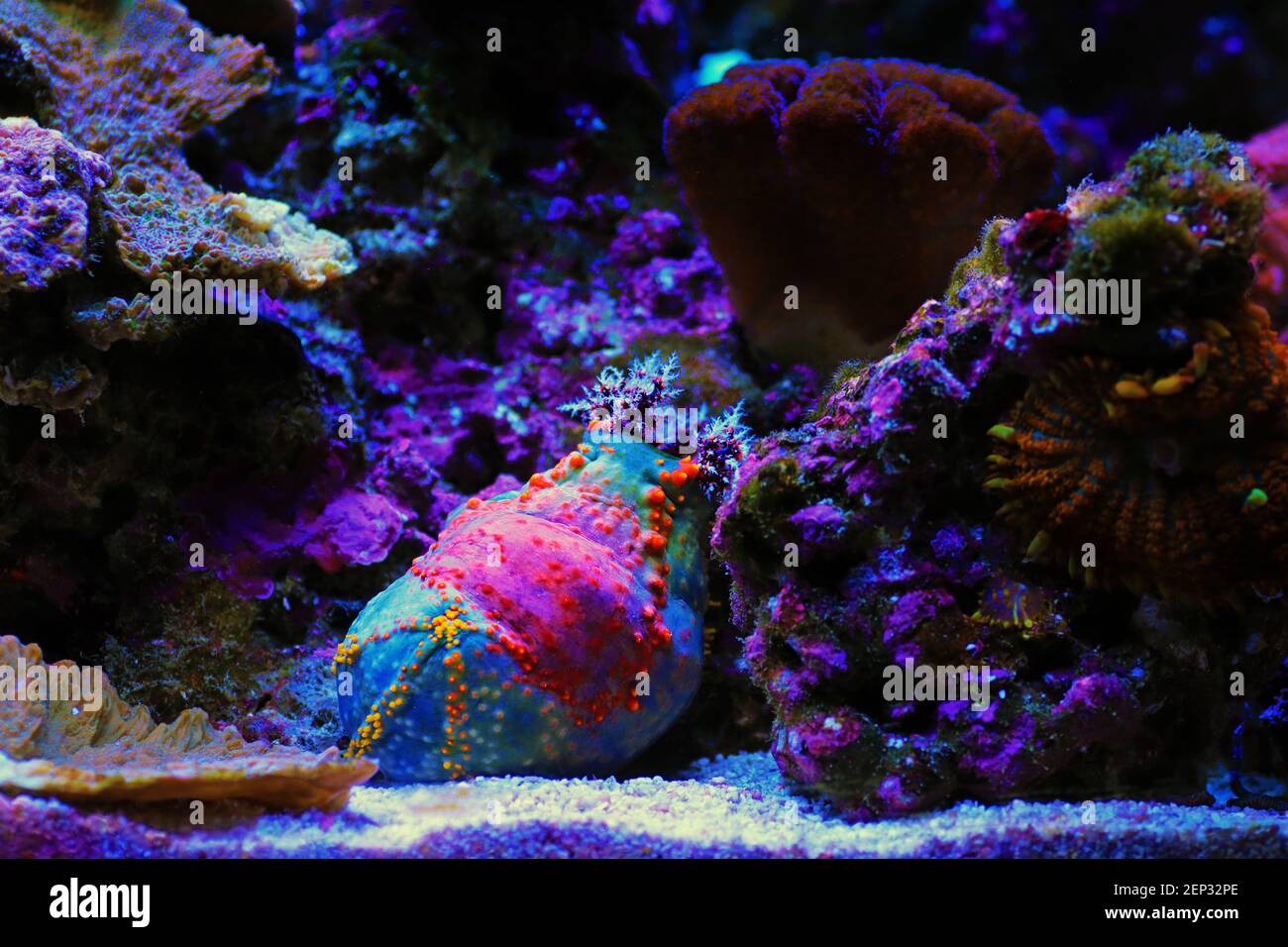
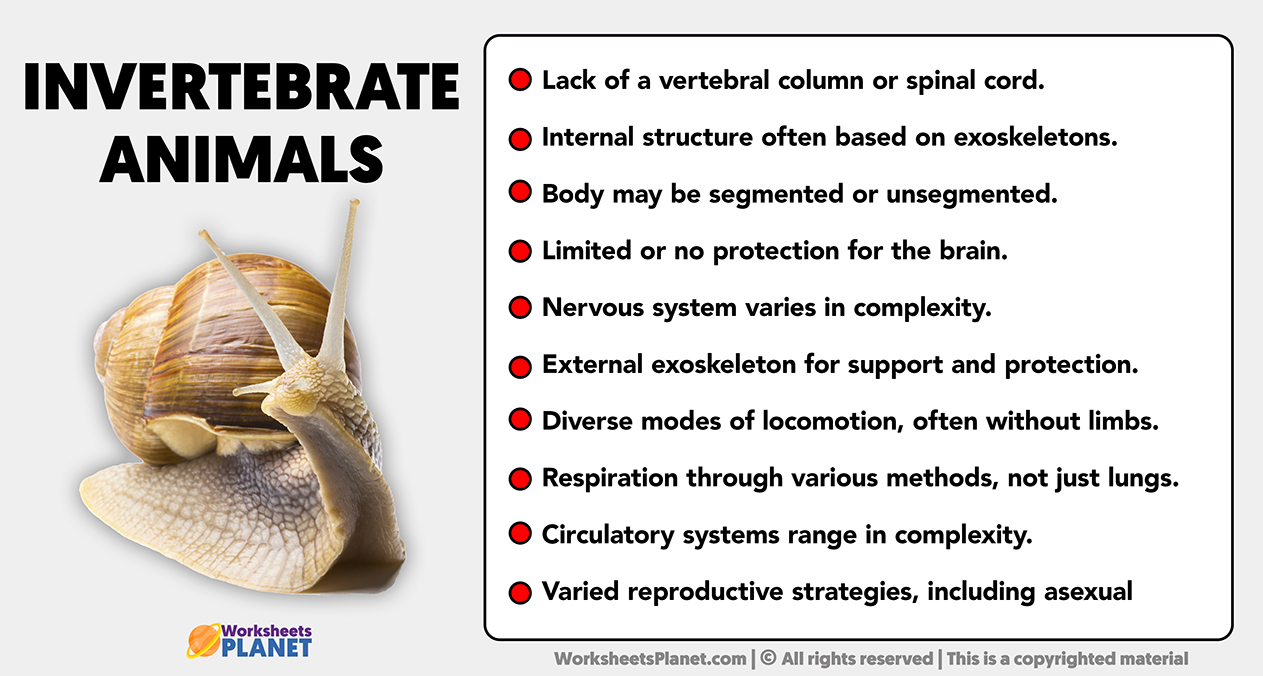
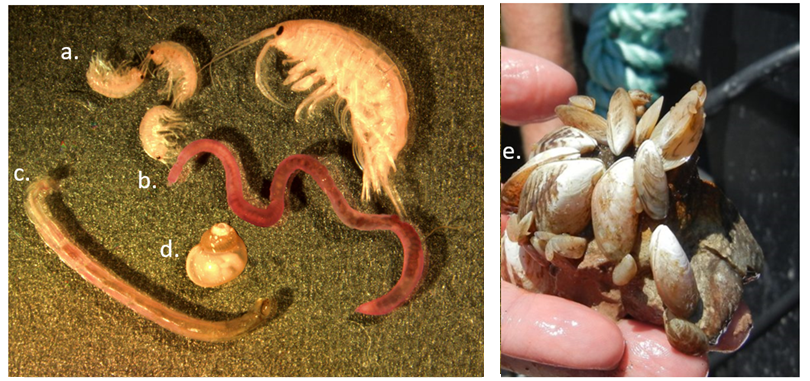

:max_bytes(150000):strip_icc()/tunicates-5c86a0cdc9e77c00010c2253.jpg)

